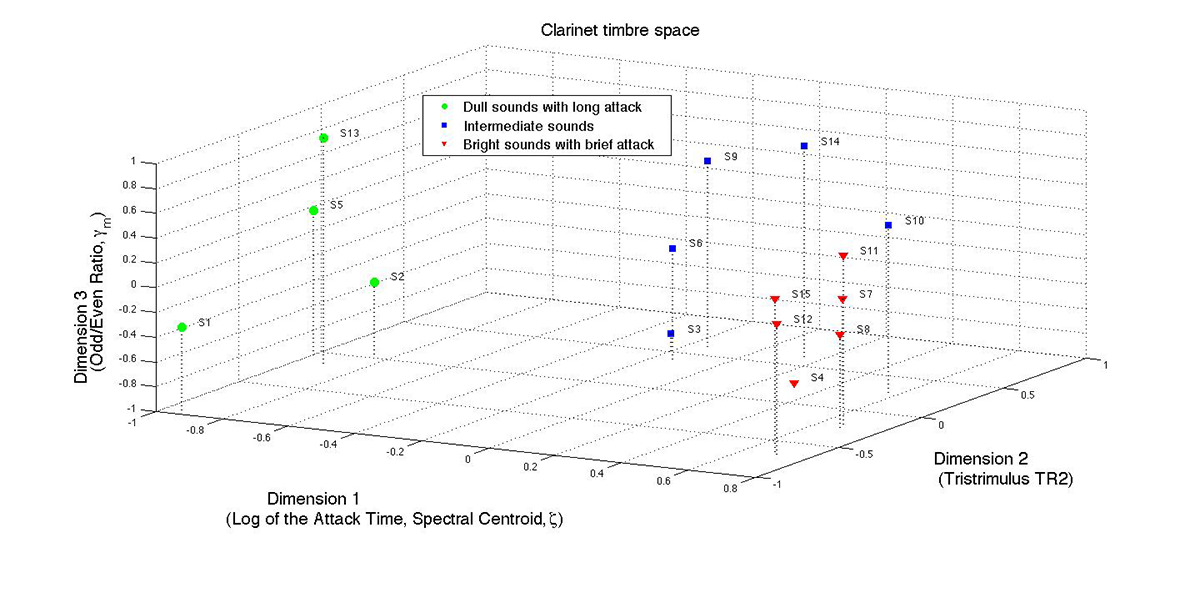From clarinet control to timbre perception


Authors: Barthet M., Guillemain P., Kronland-Martinet R., Ystad S.
Publication Date: March 2010
Journal: Acta Acustica united with Acustica (vol. 96, pp. 678-689, 2010)
Tags: Musical Interpretation, Musical Sounds, Sound Control
Abstract
This study investigates the relationships between the control gestures of the clarinet, the generated timbres and their perceptual representation. The understanding of such relationships can provide great interest in several research contexts: synthesis and control (e.g. to improve the quality of current synthesis models), music analysis and perception (e.g. to study music performance), and music information retrieval (e.g. to find relevant acoustical descriptors for automatic instrument and/or performer identification). A physics-based model was used to generate synthetic clarinet tones by varying the main control parameters of the model (related to the blowing pressure and lip pressure on the reed). 16 participants had to rate the dissimilarities between pairs of different tones and describe the factors on which they based their judgments in a questionnaire. The collected data were subjected to various statistical analyses (multidimensional scaling and hierarchical clustering) in order to obtain a low-dimensional spatial configuration (timbre space) which best represents the dissimilarity ratings. The structure of the clarinet timbre space was interpreted both in terms of control parameters and acoustical descriptors. The analyses revealed a 3-dimensional timbre space, whose dimensions were well correlated to the Attack Time, the Spectral Centroid, and the Odd/Even Ratio. Comparisons of natural and synthetic clarinet tones showed that the Odd/Even Ratio appears to be a good predictor of the beating reed situation, specific to single-reed instruments.
Sound Examples A1 (natural tone) and A2 (synthetic tone)
A1
A2
Sound Example C (acoustic clarinet crescendo)
Sound Examples B1 to B15 (stimuli of the perceptual experiment)

